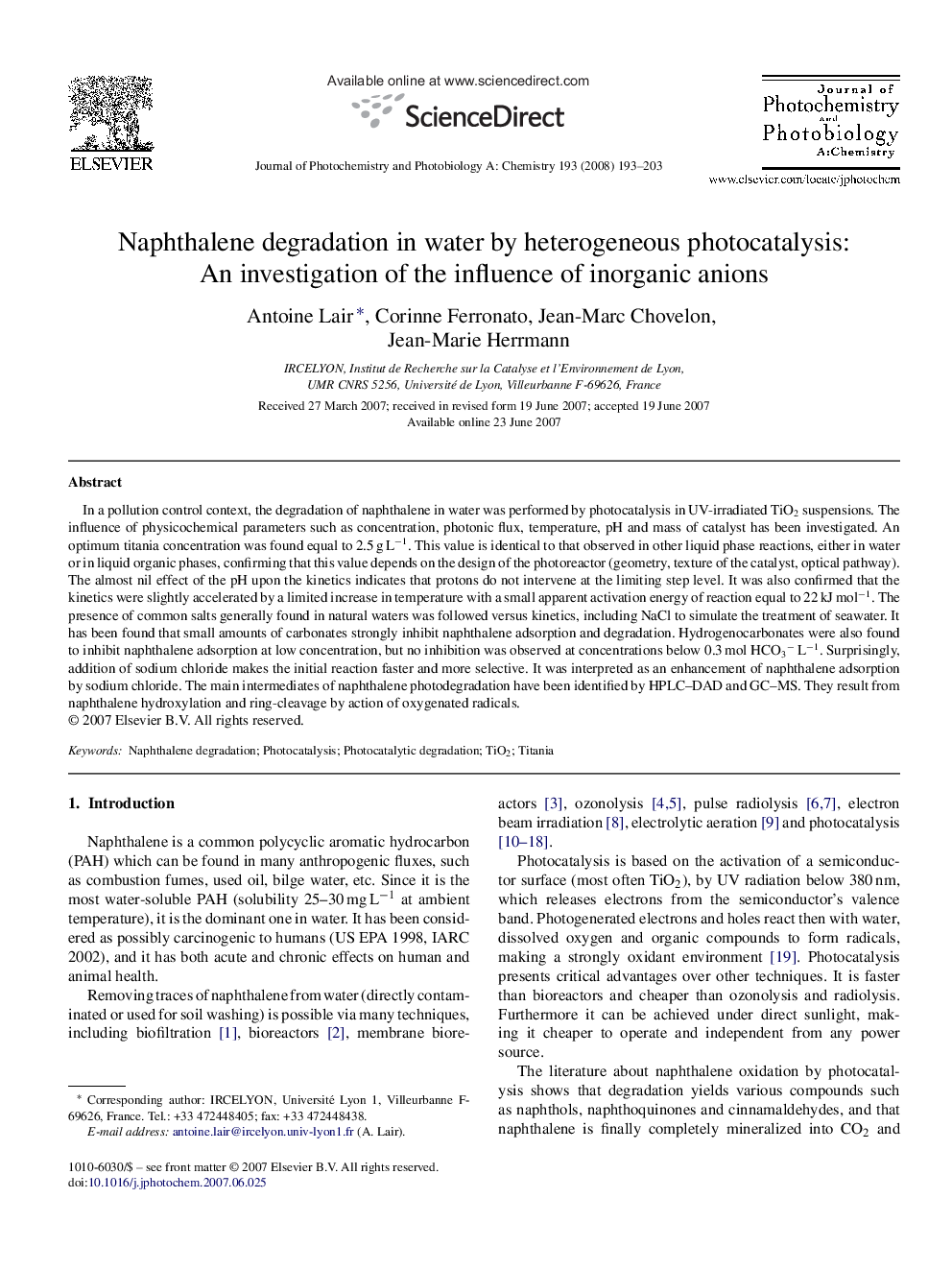| کد مقاله | کد نشریه | سال انتشار | مقاله انگلیسی | نسخه تمام متن |
|---|---|---|---|---|
| 27776 | 44042 | 2008 | 11 صفحه PDF | دانلود رایگان |

In a pollution control context, the degradation of naphthalene in water was performed by photocatalysis in UV-irradiated TiO2 suspensions. The influence of physicochemical parameters such as concentration, photonic flux, temperature, pH and mass of catalyst has been investigated. An optimum titania concentration was found equal to 2.5 g L−1. This value is identical to that observed in other liquid phase reactions, either in water or in liquid organic phases, confirming that this value depends on the design of the photoreactor (geometry, texture of the catalyst, optical pathway). The almost nil effect of the pH upon the kinetics indicates that protons do not intervene at the limiting step level. It was also confirmed that the kinetics were slightly accelerated by a limited increase in temperature with a small apparent activation energy of reaction equal to 22 kJ mol−1. The presence of common salts generally found in natural waters was followed versus kinetics, including NaCl to simulate the treatment of seawater. It has been found that small amounts of carbonates strongly inhibit naphthalene adsorption and degradation. Hydrogenocarbonates were also found to inhibit naphthalene adsorption at low concentration, but no inhibition was observed at concentrations below 0.3 mol HCO3− L−1. Surprisingly, addition of sodium chloride makes the initial reaction faster and more selective. It was interpreted as an enhancement of naphthalene adsorption by sodium chloride. The main intermediates of naphthalene photodegradation have been identified by HPLC–DAD and GC–MS. They result from naphthalene hydroxylation and ring-cleavage by action of oxygenated radicals.
Journal: Journal of Photochemistry and Photobiology A: Chemistry - Volume 193, Issues 2–3, 25 January 2008, Pages 193–203